How Pharmacists affect Doctor’s decisions on Prescribing
In our recent article, we showed how physicians prefer getting certain types of information. This article will focus on pharmacists.
Do pharmacists affect doctor’s decisions?
Not to mention that physicians are the ones who decide on prescriptions, but the role of pharmacists seems to be changing drastically in the modern advancement of medicine.
Today, many drugs with new mechanisms of action have been introduced, and drug therapy is becoming more complex. Pharmacists play a very important role in promoting safe and effective treatment.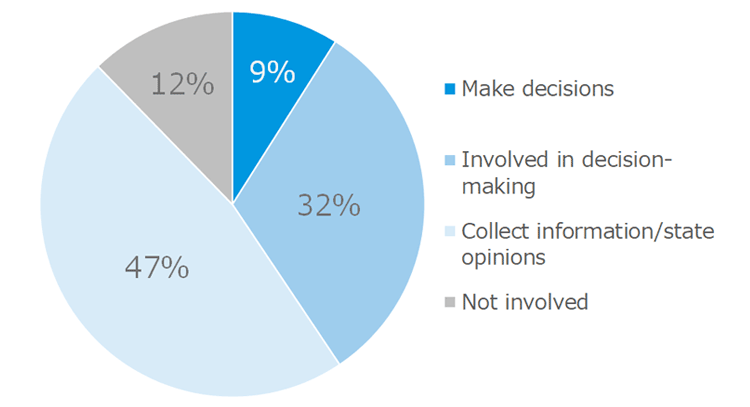
Upon the involvement of each patient’s treatment plan and prescription drugs, nearly 90% of pharmacists are involved in some way and over 40% are involved in the decision making.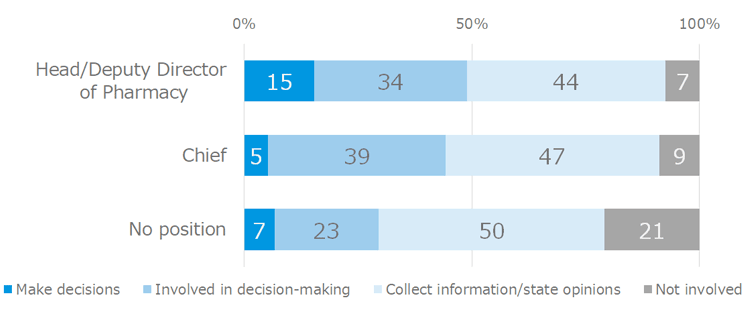
Breaking down the pharmacist's position, we can see that no matter what their positions are, they are broadly involved in the decision-making process. Nearly half of those with positions higher than a department head/deputy chief have influence over the decision-making.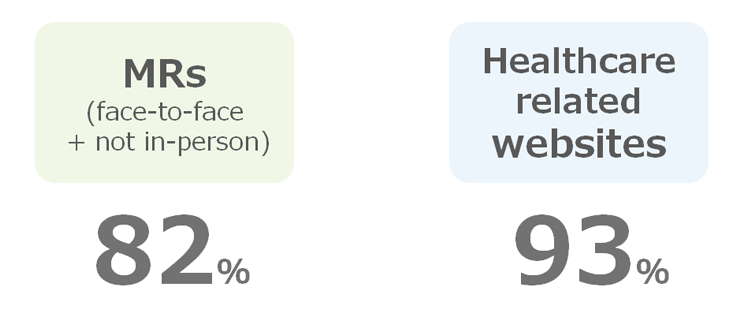
In order to be involved in the prescribing, pharmacists would need to gather expertise and drug information accordingly.
Hospital pharmacists use both MRs (medical representatives) and healthcare related websites as their information sources. We can say that approaching pharmacists, for pharmaceutical companies, is fairly straightforward.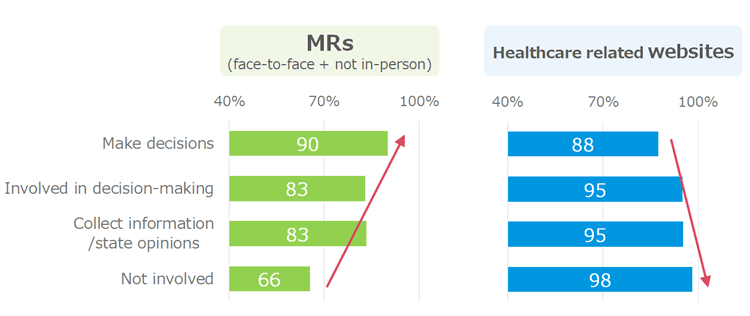
Breaking down by the level of involvement in prescribing, the more they have influence over it, the more information they collect from MRs, and the lower the use of healthcare related websites tend to be.
It can be said that decision-making pharmacists rely more on MRs. It may also be reflecting that pharmacists with smaller influence on prescribing are getting less information from MRs, and resulting in them collecting more information from online media.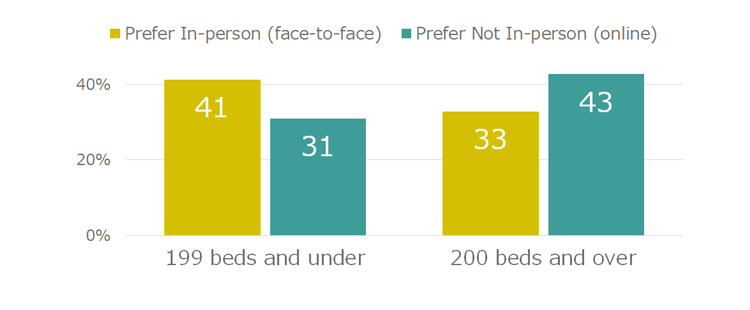
The larger their hospital was, the more likely they were to prefer not in-person way (online) when getting information from MRs.
Doctor’s Expectations toward Pharmacists
We asked what physicians expect from pharmacists and also the performance, in the survey.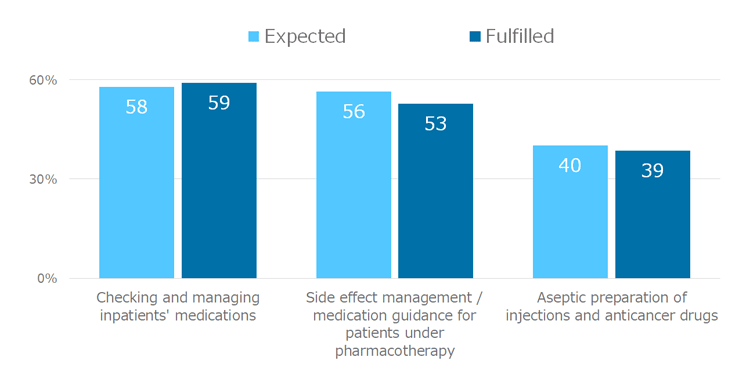
The tasks with both high expectations and performance, those with small differences which the performance meeting the level of expectations, were checking inpatients' medications, managing side effects, and aseptic preparations.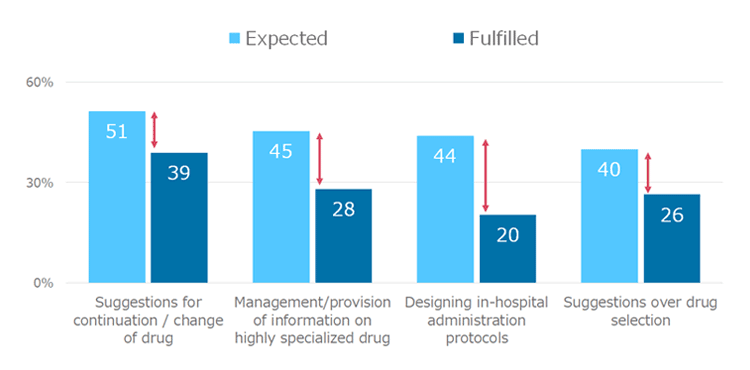
On the other hand, those with larger differences, performance not meeting the level of expectations, are tasks related to treatment policies and drug selection. Those can be said to have further possibilities of stretching the implementation.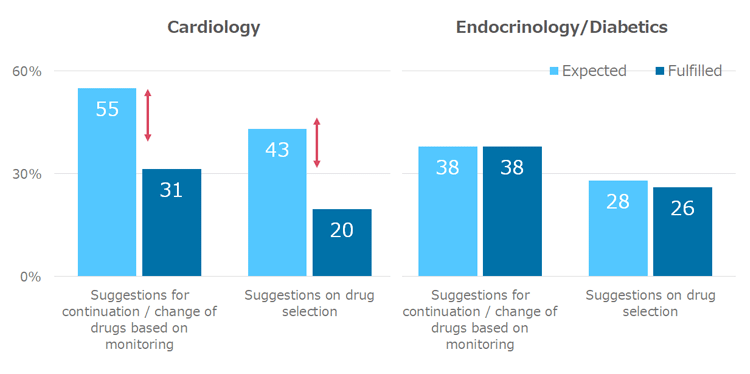
We saw some significant differences by the departments, between cardiology and endocrinology/diabetics. In cardiology, expectations were high in both “suggestions for continuation/change of medication based on monitoring” and “recommendations upon drug selection”, while a large gap in the implementation rate. On the other hand, in endocrinology/diabetics, those expectations were relatively low and there were also no significant differences with the implementations either.
Since there are many drugs for hypertension, physicians might be expecting further suggestions from pharmacists on how to use each drug and what is best for the patients’ situation.
Challenges for pharmacists to expanding their roles?
The top challenge of pharmacists' to expanding their duties, seen by physicians, is the “lack of enough pharmacists”, up to nearly 50%. “Lack of expertise” and “lack of collaboration” followed, each just a shy under 30%.
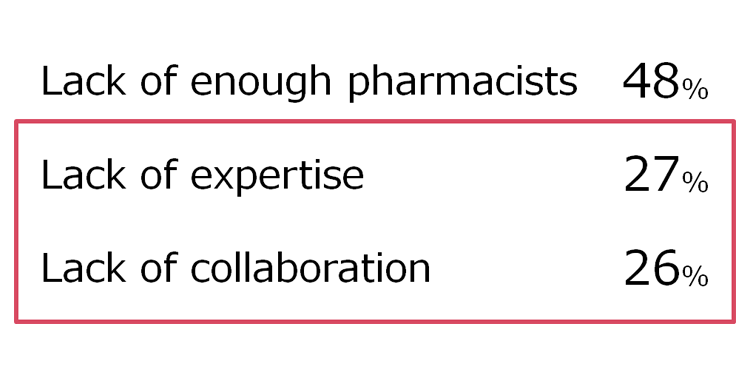
Summary
| Involvement of Pharmacists in Prescribing | |
|---|---|
| From the Pharmacists’ perspective | Fully engaged |
| From the Physicians’ perspective | Expecting more |
Summarizing the involvement of pharmacists in prescribing, from the pharmacists’ perspective, they feel they are sufficiently involved. They collect necessary information and are also involved in prescribing. Although from the physician's point of view, about half of them expect pharmacists to be involved in the decision-making of prescriptions, the actual implementation rate is only about half of what they are expected, leaving a gap.
| How MRs should reach Pharmacists |
|---|
| Ways of approach are important, regardless of their positions |
| The larger the hospital, the more likely they prefer not in-person (online) meetings |
For MRs, the ways of reaching out to pharmacists should be important. It does not largely differ by the pharmacists’ level of involvement in prescribing, but the larger the hospital, the more likely they will favor online.
| What MRs can do for Pharmacists’ further expansion of their roles |
|---|
| ■Helping with their expertise ・Provision of information for improving their expertise ・Understanding the needs of pharmacists |
| ■Helping with their collaboration ・Get to know the situation for bonding and collaboration ・Sharing case studies |
There were some conflicts between the expectations and the performance towards pharmacists by physicians. The top challenge preventing was “lack of enough pharmacists”. However, lack of expertise and collaboration were also cited.
Pharmaceutical companies can support these by providing information for improving their expertise, or share case studies for strengthening collaboration.
Furthermore, it is necessary to see and match what companies can help and what pharmacists want.
Survey Methodology
| Survey Period | August 12th to August 17th, 2021 |
|---|---|
| Target | Physicians (internal medicine, endocrinology/diabetics, respiratory, dermatology, cardiology) |
| Area | Japan |
| Number of respondents | Total of 507 |
The survey in this article used the panel of Nikkei Medical, a comprehensive online media for healthcare professionals, run by Nikkei BP.
- More than 400,000 healthcare professionals in total
- More than 180,000 physicians
- More than 160,000 pharmacists
- More than one in two doctors and pharmacists in Japan is registered
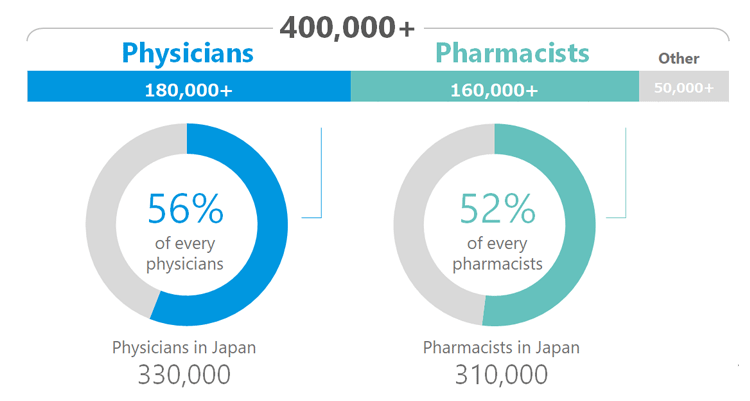
-
Feb/22/2021
-
Apr/12/2021
-
Feb/22/2021
please contact us below.

